Game Boy Advance
Top 10 Best Nintendo Game Boy Advance Games of All-Time!
The Game Boy was already considered outdated when it launched in 1989, and the 8-bit hardware was downright archaic by 2001. After nine years on the market, Nintendo eventually pulled the trigger and released a colorized Game Boy version in 1998, but the Game Boy brand was largely powered by Pokémon during the latter half of its life. With its 32-bit processor, the Game Boy Advance represented a huge leap over previous Nintendo handhelds. The Game Boy Advance was backwards compatible with past Game Boy iterations, and the system also lent itself well to ports of NES and SNES games. For the purpose of this list, however, I’ll be focusing on titles that were developed specifically with the Game Boy Advance in mind.
10
Final Fantasy Tactics Advance
2003
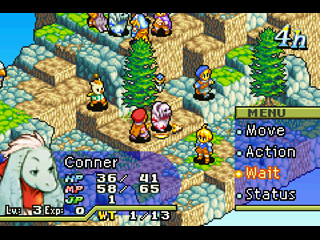
Final Fantasy Tactics Advance was the first Final Fantasy-branded game to appear on a Nintendo console in nearly a decade. The Tactics sub-series employs many of the same themes, character archetypes, and plot devices that the mainline Final Fantasy franchise is known for, but the gameplay requires a lot more strategy. Tactics Advance is built around turn-based tactical battles that take place on isometric fields. Players are given a remarkable amount of freedom with respect to the classes, abilities, and statistics of their characters, and there are a wide variety of missions to partake in. The single-player campaign will take dozens of hours to complete. Tactics Advance is an effective follow-up to the original PlayStation Tactics game, and even improves upon its predecessor in certain regards. The ability for two players to link up and battle each other was a fantastic addition to the series and contributes greatly to the replay value.
9
Wario Land 4
2001
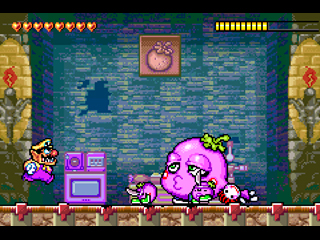
Wario Land 4 never got the attention it deserved, largely because it was overshadowed by the stellar Super Mario Advance titles. Although the four Super Mario Advance games are timeless classics, I feel Wario Land 4 should be commended because it was an original game that could only be played on the Game Boy Advance. Like its two immediate predecessors, Wario Land 4 is a unique platformer that actually encourages players to be hit by enemy attacks. Wario will take on new forms and gain new abilities in accordance to how he was attacked. (For instance, Wario can be flattened by rocks or inflated by bee stings.) The levels are designed in a way the requires Wario to utilize his various forms in order to proceed. There are a lot of branching pathways to explore, and a surprising amount of strategy is also required if players want to find all the hidden treasures in the game. The controls in Wario Land 4 have a little more depth than what the series was known for, and the game makes use of every button on the Game Boy Advance. A big change from past Wario Land games is the fact that Wario is no longer completely indestructible. He can still take a beating from his enemies, but players have to be mindful of Wario’s health meter this time around. In previous Wario Land games, players could basically be as reckless as they wanted to be with no consequences. Wario Land 4, on the other hand, is more grounded and forces players to exercise a little more caution.
8
The Legend of Zelda: The Minish Cap
2004
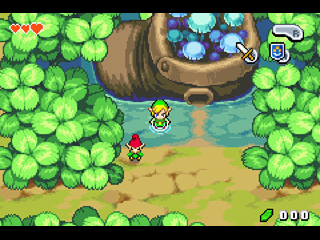
Like most Zelda games before it, The Minish Cap is a sprawling adventure game that features a vast overworld, several underground labyrinths, and a variety of interesting items to use along the way. In addition to familiar items like bombs, boomerangs, and bow-and-arrows, The Minish Cap also features several new items. For example: the “Gust Jar” has the ability to suck in nearby items, “Mole Mits” will allow Link to burrow through certain materials, and the “Cane of Piccari” can overturn enemies on their backs. The Minish Cap is played from an overhead perspective like classic Zelda games, but the game also takes a few cues from the more-recent 3D iterations. (Link’s ability to perform an evasive roll maneuver is one noteworthy example.) Visually speaking, the graphics in The Minish Cap are extremely vibrant. The animated style actually seems more in line with The Wind Waker than with earlier Zelda games. One of the most memorable aspects about The Minish Cap was its interesting setting. During the game, Link gains the ability to shrink himself down in size in order to interact with a mystical race of tiny creatures known as the Minish. The opportunity to explore the miniature worlds that the Minish created gives the game more depth and really helps differentiate it from other Zelda games. With its creative dungeons, clever puzzles, impressive boss battles, and interesting environments, The Minish Cap captured that intangible Zelda magic.
7
Advance Wars 2: Black Hole Rising
2003
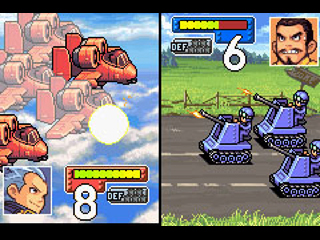
While it’s a relatively young franchise in the west, the Nintendo Wars series is actually nearly 30 years old. Famicom Wars was released on the Famicom Disk System way back in 1988, and was followed by Super Famicom Wars and three Game Boy Wars titles. America was finally introduced to the series in 2001 with the stellar Advance Wars for the Game Boy Advance. The turn-based strategy game was the perfect fit for a portable system, and the multiplayer aspect added tremendous replay value. By using the GBA link cable, up to four people could play the game with each other. The game’s interface was relatively simple, but there was a lot for gamers to keep track of. There were 18 different types of military units to command in the game – each with their own attacks, fuel supply, and movement range. Black Hole Assault followed the same formula, but added eight new commanding officers (for a total of 19), two new terrain types, and a new type of tank. The game also included a ton of extra maps for the Versus mode. In total, there were over 140 available maps in Black Hole Assault! Some critics blasted the game for being too similar to the first game, and it doesn’t earn a lot of points in the creativity department. With that said, Advance Wars 2 still ranks as the best strategy game on the Game Boy Advance and no GBA collection would be complete without it.
6
Pokémon Ruby and Sapphire
2002
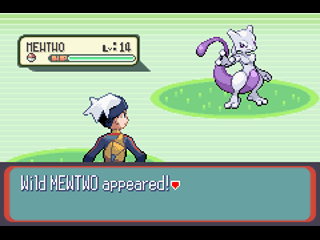
The Pokémon franchise helped breathe new life into the Game Boy during its final years, so it was only natural that the series would eventually make its way to the Game Boy Advance. The Ruby and Sapphire versions of the game are mostly unchanged from their predecessors, and players are once again challenged with catching, training, and battling as many Pokémon as they can. This isn’t to say that the GBA versions didn’t do anything new, however. All 251 species from prior Pokémon games are present in Ruby and Sapphire, and the games also introduced 135 new Pokémon for players to track down. Every Pokémon in the game was also given new “innate abilities” that could strengthen their statistics, render them impervious to certain attacks, or inflict status effects against their rivals. Another new feature in Ruby and Sapphire was the addition of “double battles” in which two Pokémon could be used at the same time! The main adventure mode is still linear, the battle system is somewhat archaic, and the graphics aren’t exactly revolutionary; but the core mechanics have incredible depth and the series is every bit as addicting as it ever was. Some criticized the games for being too similar to previous Pokémon titles, but I maintain that Pokémon fans wouldn’t have had it any other way.
5
Mario & Luigi: Superstar Saga
2003
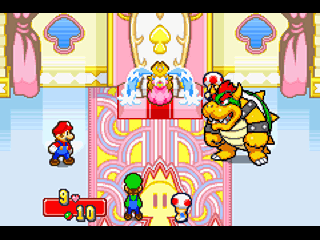
Superstar Saga is yet another stellar Mario-themed RPG. Like Super Mario RPG and Paper Mario before it, Superstar Saga implements timed button presses into its battle system in an effort to make the battles more interactive than those found in typical RPGs. Pressing the buttons at the right time can increase the amount of damage you inflict and help you avoid enemy attacks. Superstar Saga also puts a lot of emphasis on the relationship between Mario and Luigi. The two can team up with each other to perform combination attacks, and the pair can also work together to solve puzzles outside of battle. The interaction between the brothers really helps separate the game from most other RPGs. The game features a lot of familiar characters from previous Mario games, but also introduces several new likable characters into the franchise. As you might imagine, the story and setting are lighthearted, and the game is completely accessible to those unfamiliar with the genre. The writing is witty, the gameplay is imaginative, and the game is a lot of fun. If nothing else, it’s nice to see Luigi finally get some credit for once.
4
WarioWare: Twisted!
2005
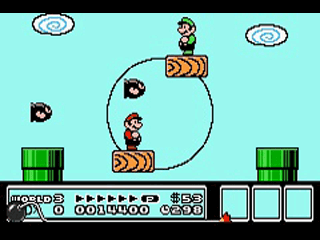
The WarioWare titles are collections of short, simple “microgames” that are presented in quick succession. These microgames typically last three to five seconds, and the player is only given vague instructions on what they’re supposed to accomplish. You can never be sure what the game will throw at you. One stage requires you to blow out candles on a birthday cake while another challenges you to shake a bottle of root beer. (You’ll also find well over a dozen stages based off of classic NES games.) The microgames themselves are almost primitive in nature, but they are linked together randomly and steadily increase in speed as the player progresses. Moreover, they are loaded with variety and outlandish humor. The original WarioWare for the Game Boy Advance used only the D-Pad and the A button, while subsequent WarioWare titles for the DS and Wii utilized stylus and motion controls respectively. Twisted! was also able to utilize a unique control scheme, as the game’s cartridge has a built-in gyroscope to detect movement and a rumble feature to provide feedback. Most of Twisted!‘s 200+ microgames are played by rotating the entire system in the proper fashion. It’s a bizarre concept, but it makes for one of the most unique, imaginative, and accessible games ever released. If the entire thing still sounds stupid, it’s probably because it is stupid. It’s impossible to play WarioWare: Twisted! without looking like an idiot, but that’s part of the fun.
3
Mother 3
2006
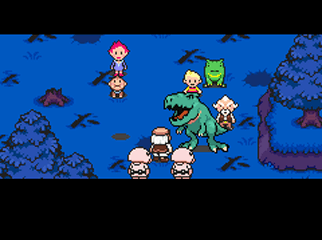
The third entry in the Mother series (and the sequel to Earthbound) was a game ten years in the making. Mother 3 was originally announced in 1996 as a Nintendo 64 title, and development moved to the Nintendo 64DD the following year. Sadly, the developers faced several setbacks due to their inexperience with 3D games, and the game was cancelled in 2001. Development picked up again on the Game Boy Advance in 2003, and Mother 3 finally hit store shelves in 2006. While the game looks and plays like its predecessors, it introduces a few notable features to the series. For instance, the game adopts a chapter system similar to the one used in Dragon Quest IV. There are eight chapters in total, and each one is told from the perspective of a different character. While the fundamentals of the battle system are largely unchanged from previous games in the series, Mother 3 adds a new twist by introducing a music combo system. By pressing buttons in time with an enemy’s theme music, players can perform devastating combination attacks. At its core, the main appeal of Mother 3 is its lighthearted nature and bizarre sense of humor. Nintendo’s decision not to localize the game for western audiences was unfortunate, but at least they looked the other way when fans took it upon themselves to translate the game into English.
2
Castlevania: Aria of Sorrow
2003
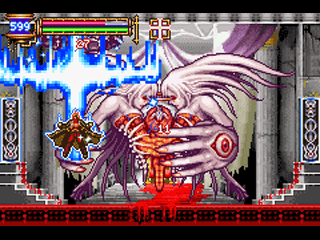
Symphony of the Night on the PlayStation helped reinvent the Castlevania franchise by borrowing several elements from Metroid, and subsequent Castlevania games on handheld systems have followed the same conventions. These “Metroidvania” games put emphasis on exploration, and also incorporate elements from traditional platform and role-playing games. A half-dozen Castlevania handheld games have been released using this same formula, and Aria of Sorrow stands as the best of the bunch. The graphics, soundtrack, level design, items, and enemies are all top notch, and the game fixes some of the problems that previous Castlevania games had. Although the game still takes place in Dracula’s castle, the fact that it’s set in the year 2035 means that character designs are generally more contemporary than those seen in earlier games. A futuristic setting also contributed to one of the most compelling stories in the series. In fact, the characters and underlying story were interesting enough to carry over into a direct sequel for the Nintendo DS. From a gameplay standpoint, Aria of Sorrow offers innovation with its “tactical soul” system which allows the main character to absorb the souls of his enemies in order to gain new abilities. There are over 100 souls to collect, and players can even trade souls with others by using a link cable! Aria of Sorrow may not be the most groundbreaking game on this list, but you can never have too much of a good thing.
1
Metroid: Zero Mission
2004
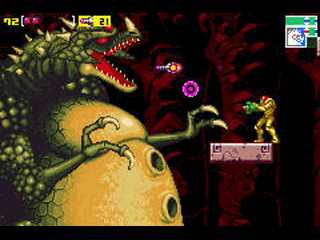
Zero Mission is an enhanced remake of the original Metroid, but it’s more comparable to Super Metroid. Zero Mission has a familiar look and feel, and also boasts a familiar soundtrack that is largely made up of remixed tunes from previous games. Most of the weapons and items in Zero Mission had also been seen in earlier Metroid games, but that’s not to say that the game doesn’t offer any new ideas. One of the most memorable parts about the game involved Samus losing her power suit – forcing players to rely on stealth in order to avoid enemies. Needless to say, crawling around through ducts and trying to stay out of view was a pretty big change of pace for the franchise. This section of the game brought many new gameplay elements to the series and was an obvious throwback to a famous cheat code from the original Metroid which allowed you to play as Samus without her armor. While Zero Mission is relatively simple on the surface, it’s actually one of the most nonlinear games in the series. The game lends itself well to speed runs and actually encourages sequence breaking. Careful exploration will allow you to skip over large sections of the game, and the players are challenged to pick up as few items as possible in order to view the best ending. Zero Mission ultimately falls short of the lofty standard set by Super Metroid, but eclipses the original in every imaginable way. Games like Zero Mission are the reason why the Game Boy Advance exists.

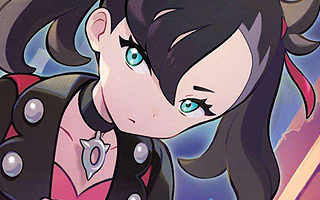
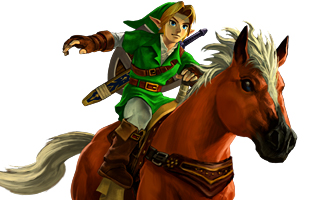
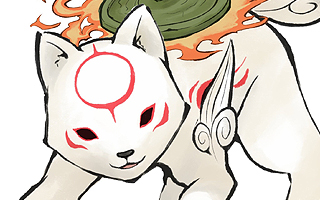
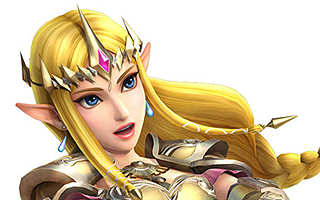
Do you agree with this list? Let us know what you think by leaving a comment below. Your opinion matters!